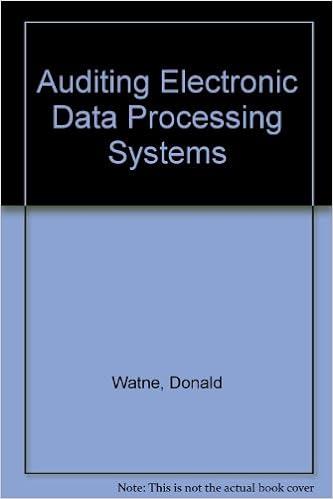Question
12/31/17 Balance Sheet Cash $17,000 Accounts Receivable $12,000 Prepaid Insurance $5,000 Inventory $15,000 Total $49,000 Equipment $100,000 Accumulated Depreciation $(20,000) Total $80,000 Total Assets $129,000
12/31/17 Balance Sheet
Cash $17,000
Accounts Receivable $12,000
Prepaid Insurance $5,000
Inventory $15,000
Total $49,000
Equipment $100,000
Accumulated Depreciation $(20,000)
Total $80,000
Total Assets $129,000
Accounts Payable $9,000
Income Taxes Payable $3,000
Total Liabilities $12,000
Common Stock $100,000
Retained Earnings $17,000
Total Equity $117,000
Total Liabilities & Equity $129,000
Additional Information:
Sales for 2018 are expected to be $200,000.
Accounts Receivable turnover is expected to be 12 times - 30 days of sales in accounts receivable out of a 360 day year (1/12 of annual sales). This would be used to get ending accounts receivable on the 2018 balance sheet days sales in accounts receivable is ending accounts receivable divided by average sales (sales for 2018 divided by 360 days). We can back into ending accounts receivables once we have estimated sales. Note that the turnover ratio changes so the turnover ratio at the end of 2017 may have been different than that expected at the end of 2018.
Gross Margin ratio is expected to be 40 percent.
Inventory Turnover is expected to be 12 times - 30 days of cost of sales in ending inventory out of a 360 day year (based upon cost of goods sold and ending 2018 inventory). This would be used to get inventory on the 2018 balance sheet. See accounts receivable above for similar computations.
The cost of ending inventory is expected to be paid next month ending accounts payable will be same as ending inventory. Or, to state in another way, accounts payable turnover is same as the inventory turnover. The assumption is that only inventory purchases flow through accounts payable the assumption actually used by most manufacturing/merchandising companies when prepared the statement of cash flows.
Equipment was purchased on 1/1/18 for $20,000. Equipment has a five year life, no salvage value, and is depreciated using the straight-line method. The old equipment is being depreciated on the same basis.
Salaries are expected to be $2,000 per month. It is expected that one-half month will be owed on 12/31/18 because of when payday falls.
$30,000 in cash was borrowed on 12/31/18 by issuing a Note Payable.
Insurance costing $18,000 was purchased on 6/1/18 (the same time in which the policy purchased in 2017 expired - the new policy was for 12 months).
The tax rate is 30 percent. Income taxes for the current year are payable during the first two months of the next year.
Dividends of $2,000 were paid during 2018.
I've started the income statement, just want to make sure I'm on the right track to keep on going.
I need an income statement, statement of retained earnings, balance sheet(12/31/17 & 12/31/18) and statement of cash flow (direct method)
Step by Step Solution
There are 3 Steps involved in it
Step: 1

Get Instant Access to Expert-Tailored Solutions
See step-by-step solutions with expert insights and AI powered tools for academic success
Step: 2

Step: 3

Ace Your Homework with AI
Get the answers you need in no time with our AI-driven, step-by-step assistance
Get Started


